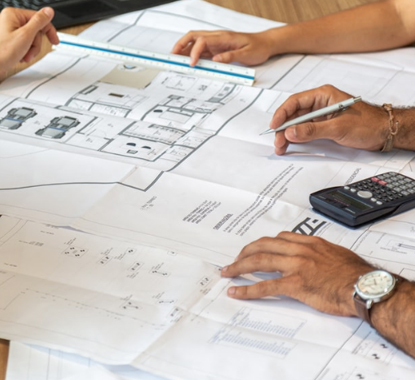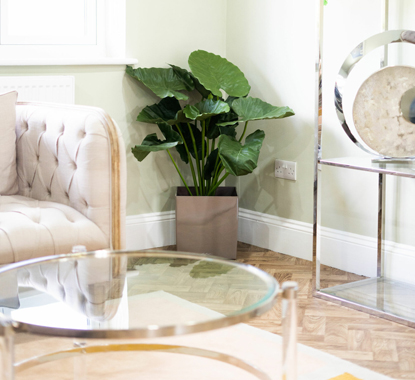Image credit: Pinterest
Hi All,
As you may be aware, I had the pleasure of speaking at the Biophillic Design Conference alongside Matthew Freeman and Rajashri Chakraborty this month. A fabulous, conscious and progressive conference, that addresses the reality and changes being implemented to improve the world around us. During our discussion, which discussed Biophillic Design & Wellbeing as part of the BIID, we touched on some very interesting topics which I thought would be great to include within a blog for further reference.
Can we always make the environment our priority?
As a designer for Care environments, which may include mental health facilities, challenging environments or hospitals the first priority is bringing in furniture which is fit for purpose. “Fit for purpose” I hear you say. In different environments, there is a requirement for furniture that is going to withstand high energy situations, robust and promotes primarily the safety of individuals using the facilities. Not only this, but materials to upholster soft furnishings should be antimicrobial, water repellent and adhere to the crib 5 fire rating too.
Designing for healthcare comes with its own layers of requirements, and levels of severity depending on the usage. As much as suppliers are doing the most to provide materials that are eco-friendly or reusable, if they don’t meet the hygiene or safety aspects of the environment they are used for, then designers have no choice but to look at supplies that comply.

Image credit: Pinterest
Take the client on a sustainable journey
During the briefing process or even when a client is selecting their designer, they will sometimes lead by coming from a sustainable perspective. They may choose a designer, based on their sustainability index, or projects that have resonated well with their brief. When this happens, you know what choices to make for your client, that will suit their motivations for the final look.
However, as the designer you are also there to educate and inspire clients that haven’t considered reusing, upcycling or making more considered choices in their spaces. By keeping up with the latest trends, product releases and educating yourself on sustainability and biophilic design, you can guide the briefing process subtly to make the best choices for the client and environment. It has to be said though, budget is always the main topic of interested and with supply and demand, it sadly feels like making conscious choices is more expensive. Fast furniture, and cheap deals online sometimes means clients prefer to buy new vs reupholstering/ reusing the old.
If the availability of labour to upcycle goods were increased, say we had a store on every high street that mended, repaired and restored items, whether that be clothing or furniture. This would become more frequently used, less expensive, less of a novelty and more of an everyday thing to partake in.
Sadly, currently society and clients are more often than not avoiding the investment into better quality furniture that will last, and move towards furniture that’s more affordable and looks good “for now”. Trends have a lot to answer for here, pushing trends and what’s good now gives short term lifecycles for goods that are not “fit for purpose” in a decade to come. Since they were brought cheap, they either don’t last the test of time, or they’re not significant enough to keep and bring new life to, so off to the landfill they go.
As designers, I do feel we are significant part of the supply chain of product sourcing, so bringing our clients on a journey, shifting away from trends and designing more timeless spaces can all positively contribute to the world around us.

Image Credit: Pinterest
Is change happening quick enough?
Between the panel, there was a discussion that this needs to be two-pronged approach to aid the efficiency of change. By this it means if the government legislation dictated the level of sustainability a product or material has, this informs manufacturers to produce more consciously. As designers at the bottom of the supply chain, we then help educate clients to choose alternate product options, from a wider selection and design style and change occurs in the middle when the two meet. More product choices on the market, chosen by designers, which are then purchased and benefit the environment.
Biophilic design and wellbeing
It is said that there is a 95% improvement in one’s mood, from being outside. However, in the environments I design for it is not always possible for people to get outside, ever or very often. Biophilic design, is the implementation of natural materials and design choices within the interiors. This includes elements such as lighting, circadian lighting, natural light or even sensory which can contribute to the way someone feels, sleeps or relaxes during various times in the day. I chose to add plants within most interiors, to add colour and texture mainly. However, they help purify the air and subconsciously connect us to the outdoors which we are innately used to. Form, is also important to connecting the indoors to the natural environment, think curved walls, furniture and soft accessories that feel welcoming, safe and relaxed within your space.

Image Credit: Pinterest
Where is Biophilic design heading?
In my opinion, biophilic design hopefully won’t even need a title. We will embrace nature and environmentally conscious designs into everything we do, that it will become the norm. I hope this will move away from being a “trend” and be an actual way of life, where we merge the outdoors into interiors, have more access to upcycling and it all be less of a novelty. Removing the “green tax” (someone said this to me), currently the privilege to go green unfortunately comes with the higher price tag.
On the other hand, if this doesn’t become the normal way of life and legislation doesn’t start “forcing” manufacturers, construction companies and those responsible to make more eco- friendly choice, we will be stuck in a limited selection of product or materials in the market and be back in a rut when it comes to designing lovely spaces that do good, as well as look good.
With Ai on the rise, technology will undoubtably become a key aspect of living and working spaces. Sadly, the energy consumption and output that data centres contribute to, does directly affects the environment and I do anticipate this will become the future of design as we know it. Is there a world we can live in, where plants and technology work together in the world of design?
Preet x









